#SATRAPA
Explore tagged Tumblr posts
Video
BESSOS-ARTAJERJES V-ARTE-PINTURA-PERSIA-MUTILACION-DESCUARTIZAMIENTO-CONDENA-ALEJANDRO MAGNO-DETALLES-ACUARELAS-PINTOR-ERNEST DESCALS por Ernest Descals Por Flickr: BESSOS-ARTAJERJES V-ARTE-PINTURA-PERSIA-MUTILACION-DESCUARTIZAMIENTO-CONDENA-ALEJANDRO MAGNO-DETALLES-ACUARELAS-PINTOR-ERNEST DESCALS BESSOS, el traidor y asesino del Gran rey de Persia DARIO III, fue apresado por los soldados macedonios de ALEJANDRO MAGNO, primero sufrió mutilaciones en su cara, nariz y orejas cortadas por el noble Oxatres, pariente del rey asesinado y persona de confianza del Rey Alejandro en el nuevo Ejército Imperial que estaba asimilando gran cantidad de persas, y más tarde condenado a la muerte por descuartizamiento, una muy dura condena que se practicaba en aquellos tiempos en faltas de enorme gravedad como un regicidio real. Pintura con tintes dramáticos, un detalle con la expresión del que sabe va a morir por la fuerza desatada de dos árboles, detalles expresivos en la Colección de Arte sobre los personajes y las escenas en la Conquista del Imperio Persa, obras del artista pintor Ernest Descals sobre papel.
#BESSOS#BESO#TRAIDOR#ASESINO#DARIO III#CONDENA#MUTILACION#MUTILACIONES#OXATRES#DECUARTIZADO#DESCUARTIZAMIENTO#DETAIL#DETALLE#PINTURA#PINTRUAS#CUADROS#EXPRESIO#EXPRESSION#EXPRESIONES#MORIR#MUERTE#SATRAPA#BACTRIANA#PERSIA#·IMPERIO PERSA#SATRAPAS#ASESINOS#REGICIDIO#JUSTICIA#ALEJANDRO MAGNO
0 notes
Text

Golden-crowned Kinglet (Regulus satrapa)
October 26, 2024
John Heinz National Wildlife Refuge, Tinicum, Pennsylvania
#bird#birds#photographers on tumblr#golden crowned kinglet#birdblr#birb#birbs#ornithology#birblr#nature#animals#wildlife photography#regulus satrapa
382 notes
·
View notes
Photo

Golden-crowned Kinglet (Regulus satrapa)
© Jason Jablonski
204 notes
·
View notes
Text

Regulus satrapa (Golden-crowned kinglet)
Plate VII | Die Nordamerikanische Vogelwelt (1891)
#bird art#bird illustration#vintage art#vintage illustration#artists on tumblr#songbirds#regulidae#golden crowned kinglet#regulus satrapa#robert ridgway
206 notes
·
View notes
Text
Character names in a fantasy world:
Balthazar Pendragon the Great Wizard of the Seven Kingdoms
Lord William Henry Robert the Thirty-Sixth
Anthea Concorde
Regulus Satrapa
Ferreus, son of Festus
Lady Amaryllis
Captain Hirundo Rustica
Galileo Figaro Magnifico
Also fantasy character names:
Scrunk
Scrimblo Bimblo
Floofin
Dave the Magical Cheese Wizard
Glup Shitto
Eeby Deeby
Sneef, son of Snorf
The Appler (THE. Appler. The one and only.)
Please feel free to reblog this with characters that fit either of these gross oversimplications of fantasy characters.
#fantasy#writing#“regulus satrapa” and “hirundo rustica” are the Latin names of the golden-crowned kinglet and the barn swallow#i'm right about this and i should say it#finch rambles
9 notes
·
View notes
Text
i have bird stickers on my RedBubble!
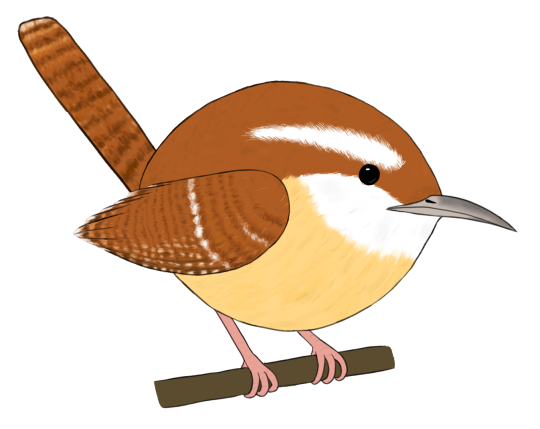
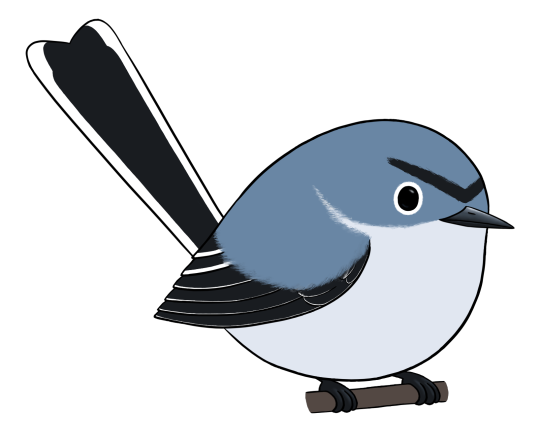
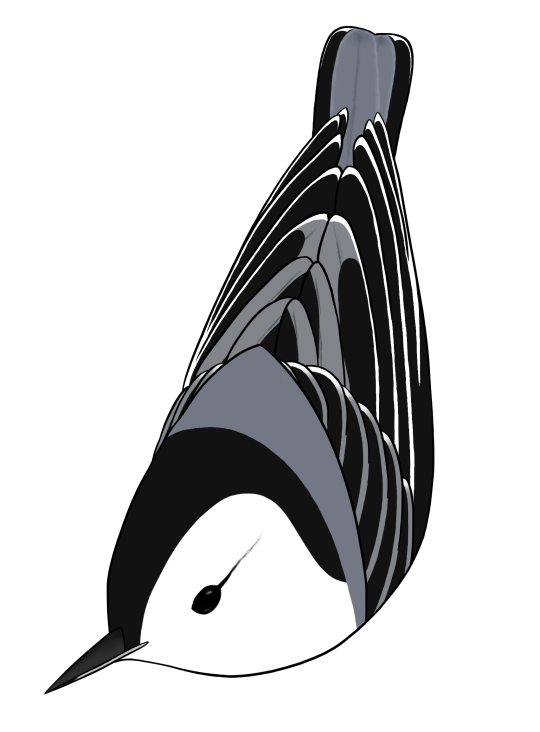
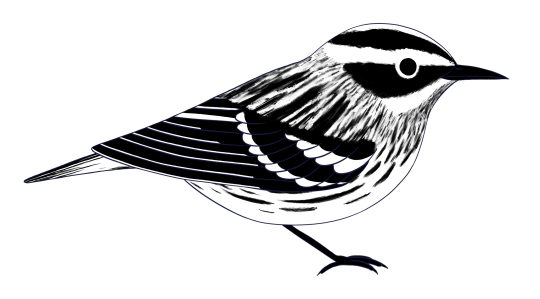
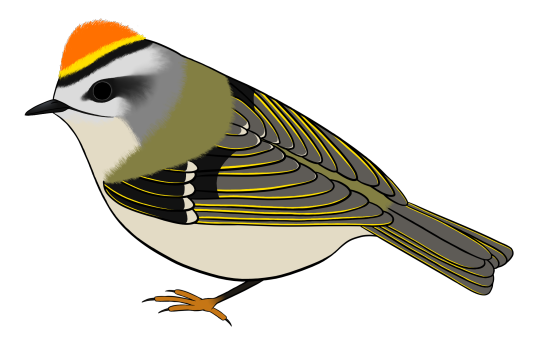
#bird#blue-gray gnatcatcher#carolina wren#golden-crowned kinglet#white-breasted nuthatch#black-and-white warbler#Aves#Passeriformes#Polioptilidae#Polioptila caerulea#Troglodytidae#Thryothorus ludovicianus#Regulidae#Regulus satrapa#Sittidae#Sitta carolinensis#Parulidae#Mniotilta varia#stickers#pins#art#my art#my post#please buy my stuff please please please
5 notes
·
View notes
Text

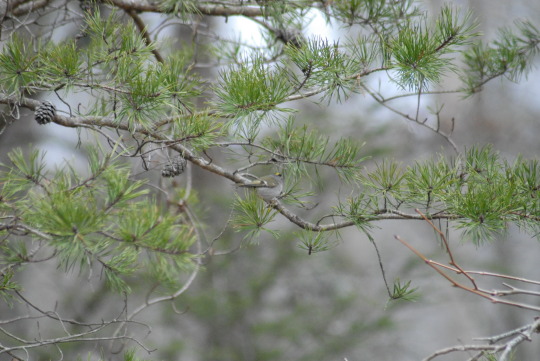

Golden-crowned Kinglet who really didn't want to be photographed
Virginia, February 2024.
#birds#kinglet!#golden-crowned kinglet#passeriformes#regulidae#Regulus satrapa#GCKI#bird photography
1 note
·
View note
Text

Golden-crowned Kinglet (Regulus satrapa), family Regulidae, order Passeriformes, KY, USA
photograph by Mike Blevins
429 notes
·
View notes
Text

The famous gun camera shot of Joe "Hoser" Satrapa, flying an F-14, catching an F-15 dead during the AIMVAL/ACEVAL exercises. This single HUD photo hit so hard it reportedly shook Japan’s confidence in their F-15 purchase decision 😗
@RealAirPower1 via X
#f14#f 14 tomcat#grumman aviation#fighter interceptor#aircraft#navy#aviation#us navy#carrier aviation#anytime baby!#cold war aircraft
30 notes
·
View notes
Text
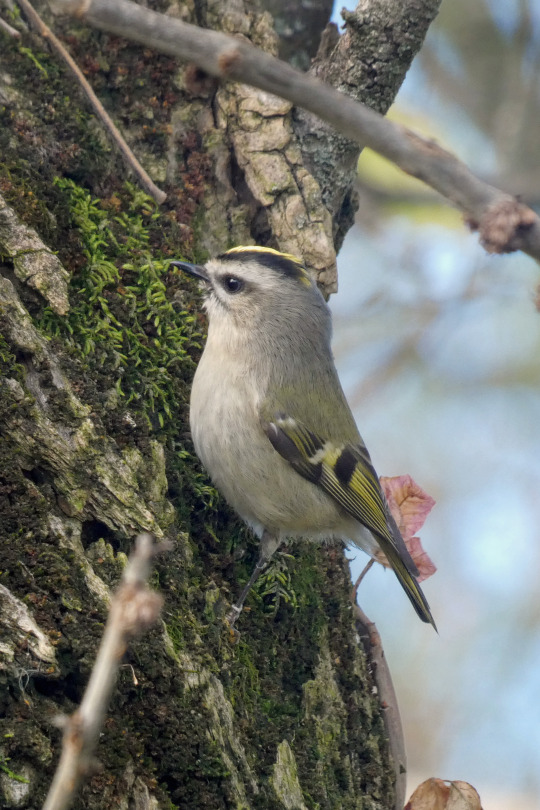
Golden-crowned Kinglet (Regulus satrapa)
October 16, 2023
John Heinz Natonal Wildlife Refuge, Tinicom, Pennsylvania
#birds#bird#photographers on tumblr#golden crowned kinglet#Regulus satrapa#kinglets#birdblr#birb#birbs#ornithology#birblr#nature#animals
1K notes
·
View notes
Photo

Golden-crowned Kinglet (Regulus satrapa)
© Tom Hambleton
117 notes
·
View notes
Note
Not sure if you've done these yet but both the ruby crowned kinglet and golden crowned kinglet are absolutely beautiful little birds that don't get nearly enough attention
I haven't done the golden crowned kinglet yet!
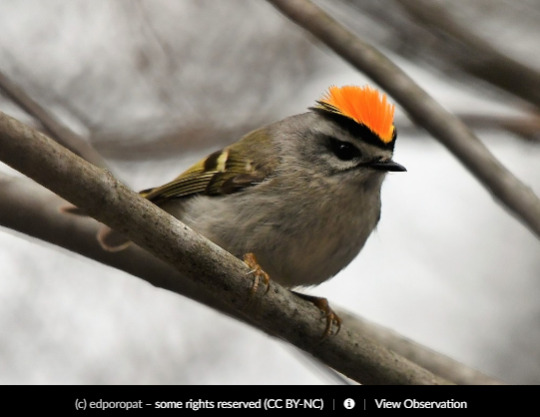
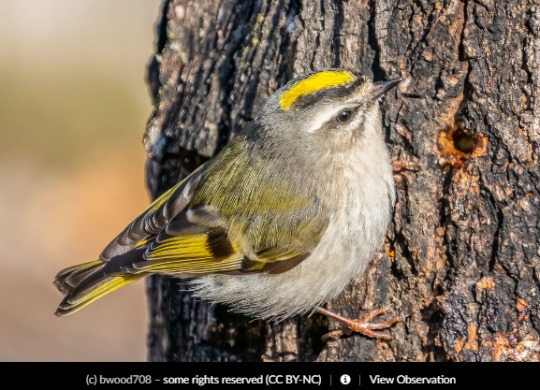
#north american birds#golden crowned kinglet#passeriformes#passerines#regulidae#kinglet#bird#birds#animal polls#poll blog#my polls#animals#polls#tumblr polls#wild birds
39 notes
·
View notes
Text

Golden-crowned Kinglet (Regulus satrapa). family Regulidae, order Passeriformes.
Great Salt Plains SP, Oklahoma, USA. May 2022.
#love these little guys#golden-crowned kinglet#kinglets#birds#regulidae#passeriformes#bird photography#wildlife#wildlife photography#animals#Oklahoma
22 notes
·
View notes
Text
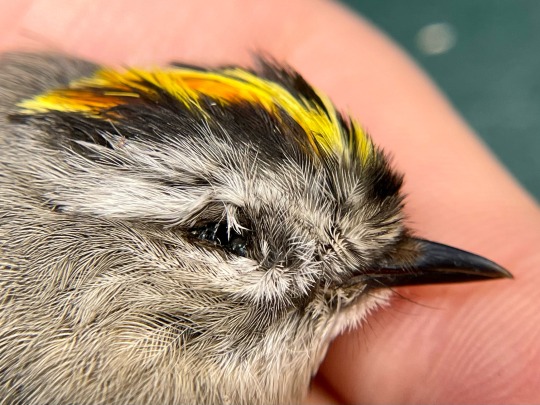
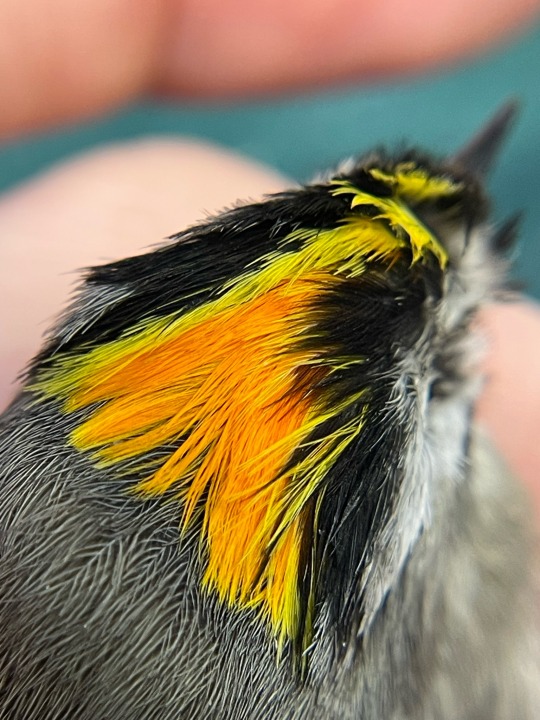
Male Golden-crowned Kinglet (Regulus satrapa) with a detailed look at his crown.
28 notes
·
View notes
Note
My WiFi cut out just as I sent you an ask, so just in case: could an F-14 put turn an A-4 Skyhawk?
Ignore me if you got the first one, Olie!
Thank you so much, and Happy Holidays if you celebrate!
Let me start out by saying thank you so much for your ask! I had sooooo much fun researching this even if it was frustrating at times. I wish I could have a whole library of aviation-themed references and documents at my disposal! It was a nice break from researching hypoxia in military aviation. Let me preface I'm no expert, but I'd like to think I evaluated it fairly thoroughly :)
Before we get started, there are a couple of things to know.
The turn performance of an aircraft is dependent on two things, the turn rate and turn radius. The turn rate of an aircraft is measured in degrees per second, whereas the turn radius is measured as the diameter of the turn. As speed increases, so will the turn rate and turn speed, until it reaches the “corner speed.”
The “corner” speed is when an aircraft gets its best turn rate, the minimum speed at which the maximum sustainable g-force load can be generated [2]. An F-14 Tomcat will tell you when you’re flying aircraft to the best of its ability; when flying at corner speed, along the edge of the buffet, the jet will shake as if it were “going over a rough road” [5].
In very simple terms, this was when airflow was doing all it could do to make the aircraft perform the maneuver, so if the pilot felt the edge of the buffet then he was getting the maximum turn. If he did not feel it, he wasn’t getting the maximum turn – but there could be a reason for that such as trying to increase speed. And if he pulled harder on the stick he could stall or depart the jet.
The corner speed is a very carefully balanced value, any change to the speed or g-force will decrease the efficiency of the turn and therefore decrease turn performance.
Turning at a speed greater than the corner speed while at the max sustainable load will result in an increased turn rate (bad) and an increased turn radius (bad)
Turning at a speed lower than the corner speed while at the max sustainable load will result in a decreased turn radius (good) and a decreased turn rate (bad).
Turning at a higher load of g’s (aka “pulling” more g’s) while at the corner speed will result in an aerodynamic stall.
Turning at a lower load of g’s (aka “pulling” less g’s) while at the corner speed will result in an increased turn radius.
A decreased turn performance isn’t necessarily a bad thing, in fact to fly at an aircraft’s corner speed is fairly dangerous as it is just at the edge of a stall by design. In terms of a dogfight, however, flying at the corner speed and therefore optimizing the turn performance is critical.
There is also such a thing as an “instantaneous turn-rate,” where turns occur above the maximum sustainable g-force load, as high as 12 G’s according to F-14 Tomcat pilot Joe “Hoser” Satrapa [3]. Note that 12 G’s is well above the limit of the F-14 Tomcat, which was designed for 7.5 G but typically limited to 6.5 G in the fleet. In the F-14 Tomcat there was no system that limited the amount of G’s the aircraft would endure. These turns may have very small turn radii but will result in massive amounts of loss in energy, either in speed or altitude, and are therefore unsustainable due to how quickly they can reach the stall speed.
Paul Nickell, a former TOPGUN instructor with experience flying the F-14 Tomcat, F-5, and A-4 Skyhawk stated bluntly that “the A-4s and F-5s that were being flown by TOPGUN couldn’t match the F-14s ability to turn” [1]. To combat this, they would increase their turn rate to end up in an offensive position but would do so “much slower (lower energy) than the F-14” [1]. Pilots have said that you don’t fly slow against Tomcats because according to this graph below from the flight manual for an F-14A+/B/D (found on a forum), the F-14 will turn tighter in both sustained and instant capacities than most aircraft flying below Mach 0.7.
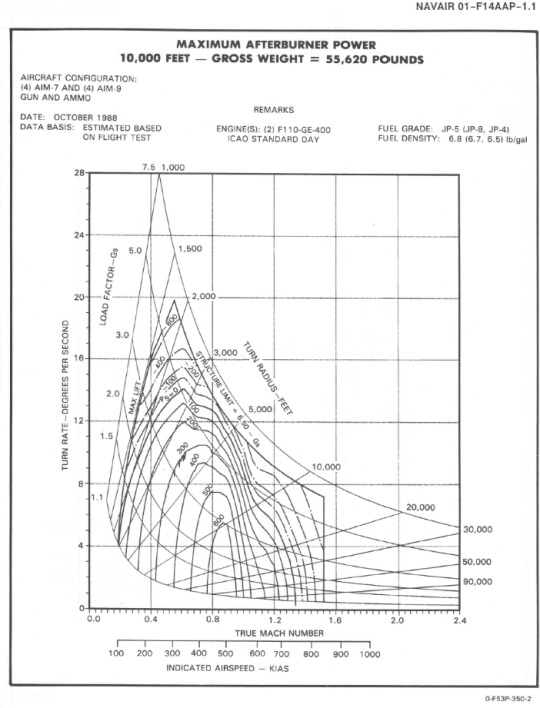
However, the A-4 Skyhawk isn’t most aircraft. John Chesire, a former US Naval Aviator and TOPGUN graduate states that “The reason that the A-4 was used as an adversary training aircraft for TOPGUN and fleet pilots was not because it was a good fighter. It was because its tight turning radius simulated the tight turning MiG series aircraft” [6]. I was unable to find the turn radius of the A-4 Skyhawk despite a lot of searching (and I mean A LOT), but knowing it was designed to simulate the MiG series, I looked for the turn performance of the MiG-17. The MiG-17 was famous for its turn performance, historian Richard P. Hallion writing that “[Its] afterburner-sustained turns in a close-in ‘fur-ball’ could be lethal” [7]. According to some sources, the MiG-17 had a sustained turn rate of 13 degrees per second with a radius of 1800 ft at low altitude at 300 knots. Looking at the graph above, if a Tomcat was pulling 7.5 Gs with a turn rate of 28 degrees per second with a radius of 1000 ft at approximately Mach 0.6. Other sources claim the F-14 Tomcat has turn performance more comparable to that of the MiG-17, with a slightly higher turn rate and speed but a slightly larger turn radius, but it is impressive regardless. The big problem with this is that while the MiG-17 has an afterburner, the A-4 Skyhawk does not.
If we examine other aspects of each aircraft, the A-4 could hold its own but only if it got the F-14 Tomcat to slow down. Even then, it wouldn’t be an easy fight as the Tomcat was the better aircraft overall. It had other advantages, of course, one of which was that it was much smaller than the F-14 Tomcat. In fact, the horizontal stabilizers of the F-14 Tomcat are 33 ft wide, meaning the wingspan of the A-4 Skyhawk at 27’ 6” is smaller than the horizontal stabilizers of the F-14 Tomcat. The F-14 Tomcat, appropriately nicknamed “tennis court”, was the largest and heaviest fighter aircraft to ever fly off of an aircraft carrier. Though the Tomcat was known for its endurance, that endurance does not apply to dogfights. In full afterburner, the F-14 could burn close to 2,000 lbs of fuel per minute having only taken off with 16,000 lbs of fuel to begin with. Comparatively, the A-4, which is actually a subsonic aircraft as it does not have an afterburner, could fly for “more than an hour at full military power” [1]. This means that the F-14 Tomcat had to act fast, be disciplined, and go into dogfights with strategies and plans in mind. “Get in, take its shots, and get out,” Nickell states [1].
I know I am biased, however, given what I have heard from all those that have flown her, I do believe in most cases the F-14 Tomcat will outmaneuver most fourth-generation aircraft.
But despite all of this…
It’s not the plane, it’s the pilot(s) :)
SOURCES:
[1] Rogoway, Paul Nickell And Tyler. “How to Fight to Win in the F-14, A-4 and F-5 at the Navy’s Topgun School.” The Drive, July 3, 2020. https://www.thedrive.com/the-war-zone/8282/how-to-fight-to-win-in-the-f-14-a-4-and-f-5-at-the-navys-topgun-school.
[2] “Basic Fighter Maneuvers.” Wikipedia, December 2, 2023. https://en.wikipedia.org/wiki/Basic_fighter_maneuvers#Pursuit_curves.
[3] Parsons, Dave. Grumman F-14 Tomcat: Bye-bye, baby...! St. Paul, MN: Zenith Press, 2006.
[4] Simmonds , Bertie. “An In-Depth Look at the A-4 Skyhawk.” Key Aero, May 27, 2021. https://www.key.aero/article/depth-look-4-skyhawk.
[5] Baranek, Dave Bio. “Launching the Phoenix and Dogfighting against the F-15: Q & A with F-14 Tomcat Rio Dave ‘Bio’ Baranek Part 2.” The Aviation Geek Club, March 3, 2021. https://theaviationgeekclub.com/launching-the-phoenix-and-dogfighting-against-the-f-15-q-a-with-f-14-tomcat-rio-dave-bio-baranek-part-2/.
[6] Leone, Dario. “US Naval Aviator Explains Why Even Though the A-4 Was Agile Enough to Serve as Adversary Aircraft with the US Navy, the Skyhawk Was Not a Great Fighter.” The Aviation Geek Club, December 26, 2022. https://theaviationgeekclub.com/us-naval-aviator-explains-why-even-though-the-a-4-was-agile-enough-to-serve-as-adversary-aircraft-with-the-us-navy-the-skyhawk-was-not-a-great-fighter/.
[7] Magazine, Smithsonian. “Return of the Mig-17.” Smithsonian.com, October 1, 2018. https://www.smithsonianmag.com/air-space-magazine/restoration-mig17-180970367/.
#this wasn't an easy thing to research but that's okay :)#i even gave you citations :o#had so much fun doing this tho#ask#i like research#F-14 Tomcat#A-4 Skyhawk#TOPGUN#research#information#info dump#sorry if there are inaccuracies#turn radius#aviation#chart
15 notes
·
View notes


